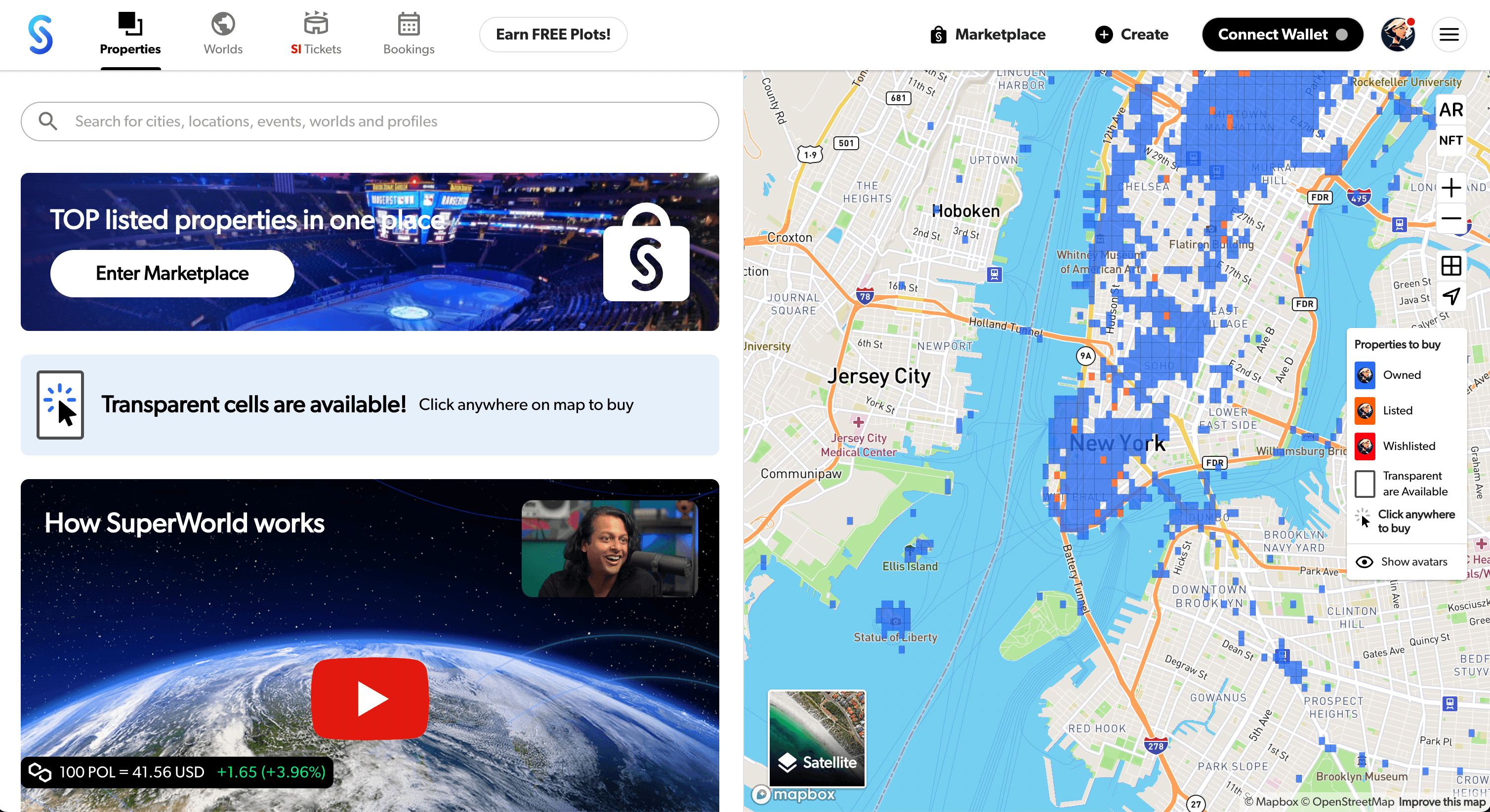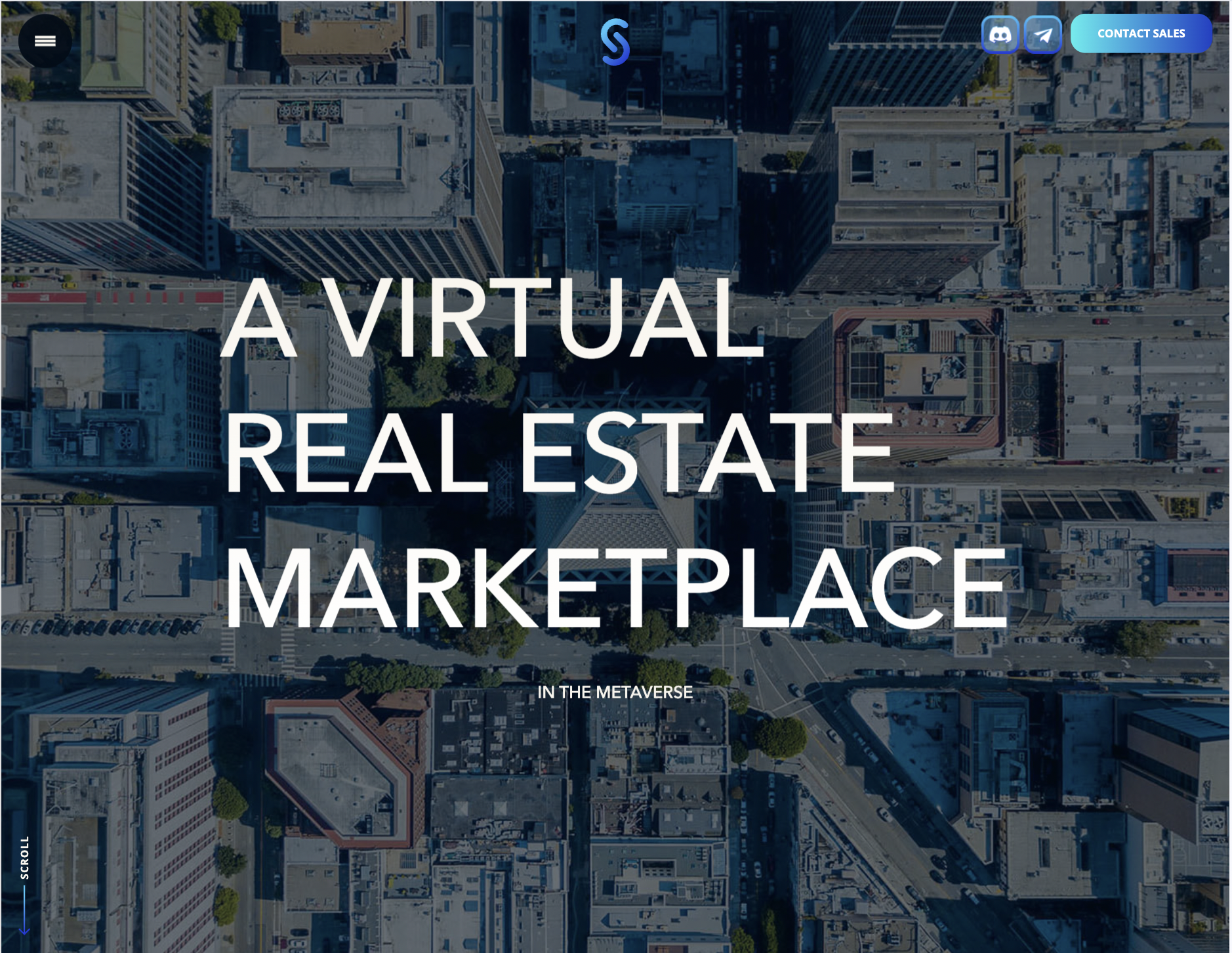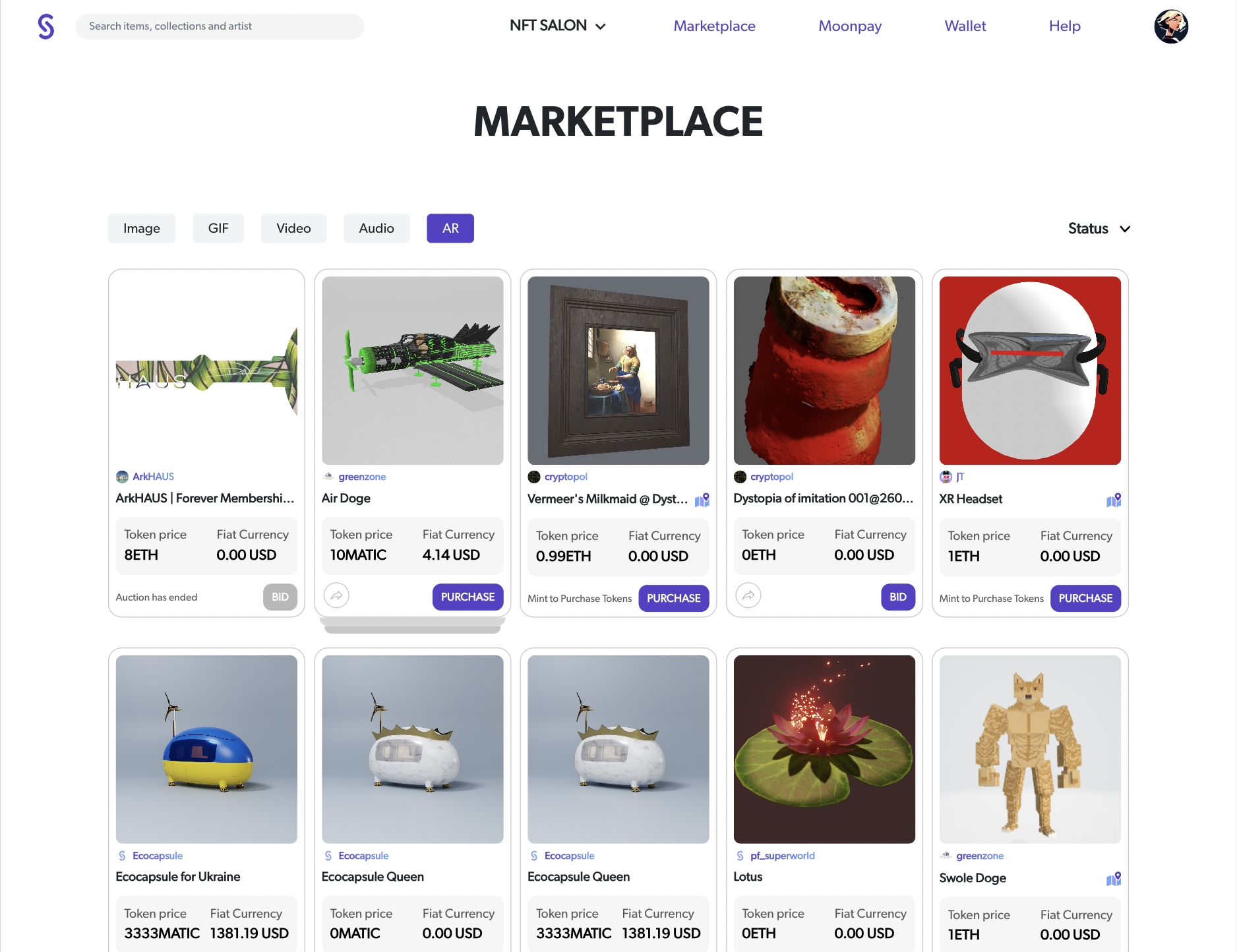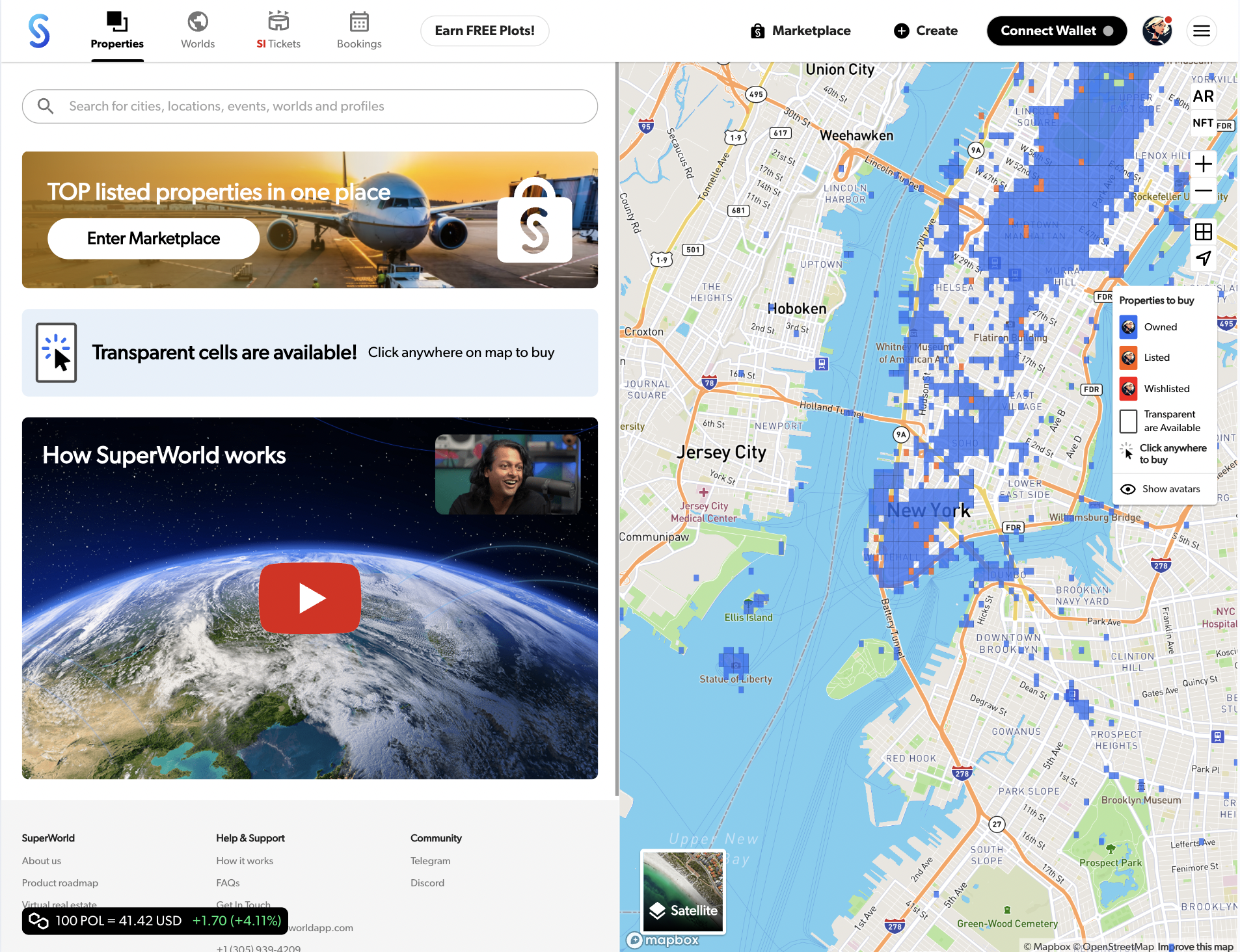SuperWorld App

SuperWorld is modern technology company that has several products dedicated to the latest trends in Augmented Reality, Virtual Reality and NFT. As a web developer, I was responsible at providing the best user experience for the users and ensuring the code quality and scalability.
The company has several products:
- Website: a dynamic website that provides information about the company and the products.
- NFT Marketplace: a platform where users can buy and sell NFTs. The platform is built with React and Redux.
- VR Real Estate Platform: a platform where users can buy and sell virtual real estate. The platform is built with React and Redux.



Project: Company Website
My initial responsibilities included moving a website from existing CMS to a static website. Working together with a team of designers and other developers we successfully moved the website to a React-based static website and improved the speed and performance of the website, not to mention the visual esthetics. (Since then the website was redesigned and moved to a different platform)
My excitement for this project was to work with the latest technologies and to be able to work with a team of professionals was beyond imaginable. I was able to create a full github workflow, working with AWS and deploying the website to the server.
The designs included several pages and a responsive version that should be scalable and easy to use. We also intended to aff new features in the future so that the code should be scalable and easy to maintain.
At that point of time, the company moved from Adobe XD to Figma and I was able to experience two of those design tools and compare them. I prefer Figma for it's intuitive toolset and ease of transferring design into code.
Project: NFT Marketplace
After wrapping up my work on the company's website, I joined the team who work on developing the NFT Marketplace, a complex application loaded with multiple functionalities and pages. I focused on crafting a seamless user experience for buying, selling, minting, and transferring NFTs, ensuring each process was intuitive and straightforward.
A significant part of my role involved redesigning the Profile page to cater to both artists and buyers. I implemented a dual-view feature to accommodate private and public profiles, allowing for customized experiences based on user roles. This involved conditional rendering for different user types (new user, signed-in user, artist, etc) and data categories (NFT types, sale status, etc).
I also worked on integrating a dynamic form for users to easily update their bios and links, enhancing user engagement and interaction with the platform.
On the Marketplace and NFT Details pages, I developed components that effectively fetched and displayed data from our APIs, such as usernames, prices, and images. These components not only supported the core functionalities but also elevated the overall aesthetic and usability of the pages.
The Details page was particularly complex, where I integrated features like an image slider, 3D previews, and a streamlined purchasing process. These enhancements significantly improved the functionality and user-friendliness of the marketplace, making complex transactions feel simple and secure.
In addition to these developments, I tackled the refactoring of legacy code, boosting the platform’s performance and scalability. This work was crucial in improving maintainability and setting a strong foundation for future enhancements.
Project: VR Real Estate Platform
The VR Real Estate Platform was a challenging project that required a deep understanding of the web3 ecosystem and smart contracts. I worked closely with other developers in the team to support the integration of new wallets that supported not only Ethereum but also other cryptocurrencies.
I was responsible for developing the front-end of the platform, which included creating a seamless user experience for browsing, buying, and selling virtual real estate. I supported a map feature build with Web3.js that allowed users to explore different properties and view detailed information about each listing.
I also took a role of transferring technologies from vanilla JavaScript to TypeScript and Redux. This was a challenging task but I was able to successfully implement the changes and improve the code quality and maintainability. Working closely with other developers, I ensured that the platform was secure, scalable, and user-friendly,
One of main main achievements of this project was the successful implementation 'User' and 'Search' providers, centralizing the storage and retrieval of map-related content, facilitating efficient data handling and retrieval. That was achieved by leveraging the React's Context API to manage and distribute data throughout the application.
Conclusion
Throughout this project I have learned a lot about the latest technologies and how to work with a team of professionals. I have improved my skills in React, Redux, TypeScript, and Material-UI, and gained valuable experience in developing complex web applications.
I have also learned how to work with APIs, integrate third-party services, and optimize performance for large-scale applications.
This project has been a great opportunity for me to grow as a developer and expand my knowledge in the field of web development.